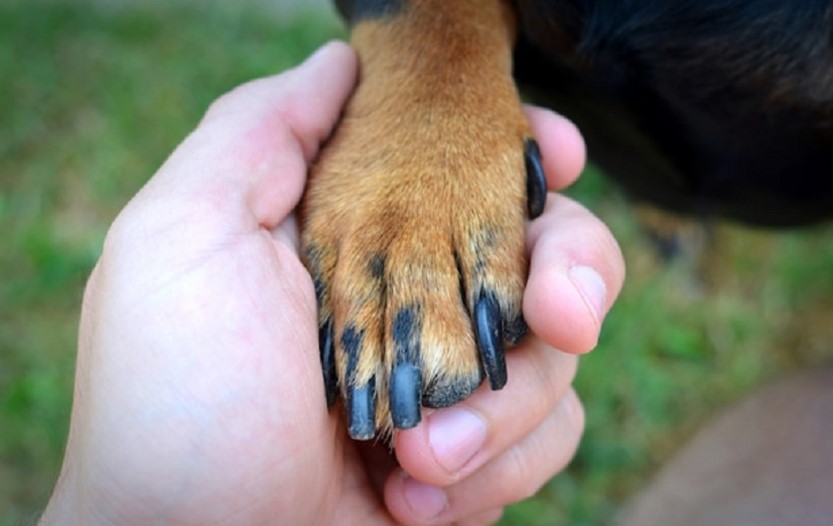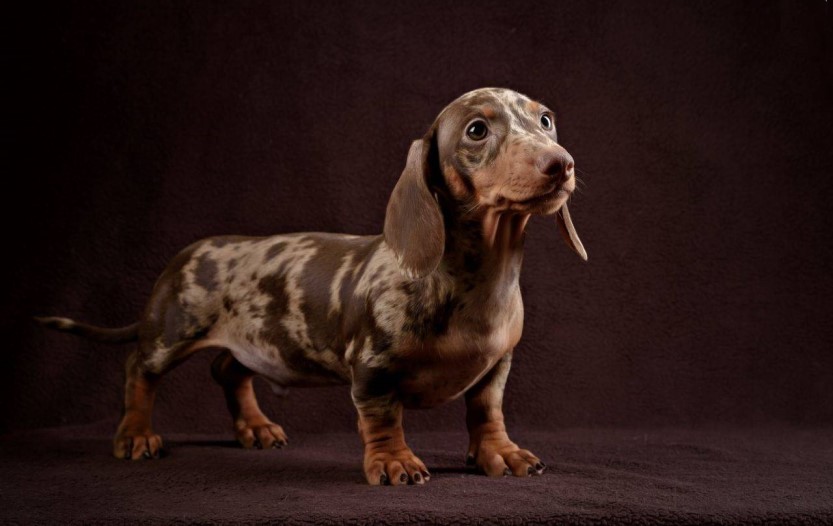If you own a Dachshund, you understand the excitement they bring to your life whenever you come home. We must ask ourselves about the responsibilities that come when we get a dog into our lives. Perhaps you noticed a change in your dog’s walk and wondered what is happening to your Dachshund.
Why do your Dachshund feet turn out? There are several reasons and theories why your Dachshund’s front paws turn outwards but don’t worry. This article will explain it all. These sausage dogs have distinctive long bodies, short legs, and outward-facing paws as part of their natural body. This is known as “east-west” positioning following two theories, but it could also be a genetic disorder called chondrodysplasia, amongst other things.
Read on to find out why your Dachshund’s feet turn out and what you can do to help. Understanding your Dachshund’s needs and wants by paying attention to their actions could prevent further issues that out-facing feet can cause, but this might not always be true. Your dachshund could have already been born with his feet facing out and is living a healthy, happy life.
So, let’s start with a simple question.
Why Do Dachshund’s Feet Turn Out?

The exact reason dachshund’s front paws turn outwards still needs to be fully understood. The following theories and diagnoses aim to shed light on this particular trait. These theories and diagnoses could all explain why Dachshund’s feet turn out.
East-west positioning, chondrodysplasia, interdigital cysts, patellar luxation, nutrient deficiency, and canine elbow dysplasia could all be reasons why your dachshund has leg problems.
East-west Positioning First Theory
The first theory of east-west positioning suggests their outward dancing paws were an outcome of selective breeding. Dachshunds were originally bred for hunting, and their tiny legs and long bodies were considered an advantage for going underground and digging to flush out burrowing animals. However, this could all be an accidental consequence of selective breeding.
East-west Positioning Second Theory
The second theory suggests that evolution over time caused the east-west positioning of the front paws of a Dachshund to be an adaptation to their unique body shape and size. They also have a relatively short spine and long rib cage, creating the distinct, elongated shape we see today. This body shape could be causing stress on their front paws, causing them to turn outwards to distribute the weight better and minimize the risk of injury.
Chondrodysplasia
It could also be chondrodysplasia or antebrachial growth deformity. A genetic disorder that affects cartilage and bone development, often seen in other dogs like Shih Tzu, Corgis, Basset hounds, and Scottish Terriers.
Interdigital cysts
Interdigital cysts are a common problem in Dachshunds. This affects your dog’s foot, specifically its toes, and it is typically called an interdigital furuncle. Interdigital cysts can develop deep between the toes causing painful lesions that may cause your dog to limp. This is thought to happen from a severe bacterial infection. If you see any of this happening, go to a vet for a routine check-up. Topical treatment may be used to provide relief to the area. Although, this is what you can do to prevent further cysts and have a speedy recovery.
- Avoid using electric clippers; instead, use scissors
- Wash your dog’s paws and paw pad daily, and maintain clean
- Use the given medical topical
- If issues persist, try bathing them with a chronic topical antimicrobial
Patellar Luxation
Dachshunds are known to have problems in their knees, and patellar luxation is when the patella (knee cap) moves out of place, which helps your dogs maintain flexibility and proper knee extension. A luxating patella, or in more non-specialists terms, when the knee cap moves out of place, can be caused by genetic, congenital, or traumatic situations.
Nutrient Deficiency
As we know, nutrients are vital for dogs just as they are for humans! Although it may be different nutrients and minerals we use daily to stay healthy and strong, your dog may need the same. By choosing to feed your dog correctly and sufficiently, you buy them more time alongside your side.
On the contrary, if you feed your dog scraps, leftovers, and other junk, you will increase their chances of poor health, just like a human who tends to eat fast food every day. While understanding your budget might not be accessible to the best food, you can find cheaper yet healthy options for your four-legged friend by doing your research. Poor health often means a nutrient deficiency lingers somewhere, and later on, it could affect Dachshunds differently.
For example, it can affect their bones in the process of growth which in turn can lead to lame posture, which leads to turned-out feet.
Canine Elbow Dysplasia
Canine elbow dysplasia is when three bones in the elbow joint are too packed together causing the bones to shift and not fit properly. This can be caused by weight gain, injury, and lack of movement to develop strength. This, however, is more dominant in bigger dogs but can be found in smaller dogs on some occasions.
Should You Be Concerned About Your Dachshund?

No. You should not be concerned about your Dachshunds feet. However, it is essential to note that dachshunds, like any dog breed, are prone to specific health problems, such being intervertebral disc disease (IVDD). IVDD is a common disease that causes severe issues with the spine or spinal cord if left untreated. Dachshunds tend to be more vulnerable to this as their long body shape puts them at a greater risk of developing back problems, causing a slipped disk. This can all result from improper exercise, obesity, and other factors.
However, a fun fact is that their turned-out feet are a part of history so this is familiar information. They were often said to resemble Queen Anne style furniture, which features the ‘leg’ of the table to turn inward and the ‘foot’ outwards, just like a Dachshund.
Can You Prevent Your Dachshund’s Feet From Turning Out?
The truth is you can’t control or prevent your Dachshund’s feet from turning out if they are already facing outward. After all, they could be born with it! However, keeping your dog healthy and happy through a balanced diet, regular exercise to avoid obesity, and proper veterinary care can prevent your Dachshund from discomfort from having feet that turn out. You can also contact your local veterinarian for professional advice.
How Commonly Do Dachsunds Paws To Turn Out?

Yes. It is relatively common for Dachshund’s paws to turn out. Let’s consider that dachshunds are prone to a condition known as “knuckling” or “scuffing” of the front feet, which causes the paws to drag on the ground when walking or running. This is most likely due to chondrodysplasia, as discussed earlier, which affects the growth of the bones in their legs. If your Dachshund is having issues and pain, it is best to discuss this with your local veterinarian.
Final Words
The potential reasons your Dachshund’s feet turn out can be due to East-west positioning, chondrodysplasia, interdigital cysts, patellar luxation, nutrient deficiency, and canine elbow dysplasia. I know it all sounds like a lot, but by giving your Dachshund love and attention, you can figure out if they are suffering from any of these conditions and take the proper measures to ensure a healthy, happy life.
However, It is essential to note that the east-west positioning of the dachshund’s front paws is not a health problem or sign of any underlying condition. They are completely healthy and have no issues with their outward-facing paws. Their ability to move and perform physical activities remains the same as any other healthy dog. Always watch your Dachshund’s physical condition and find veterinary care when needed.

